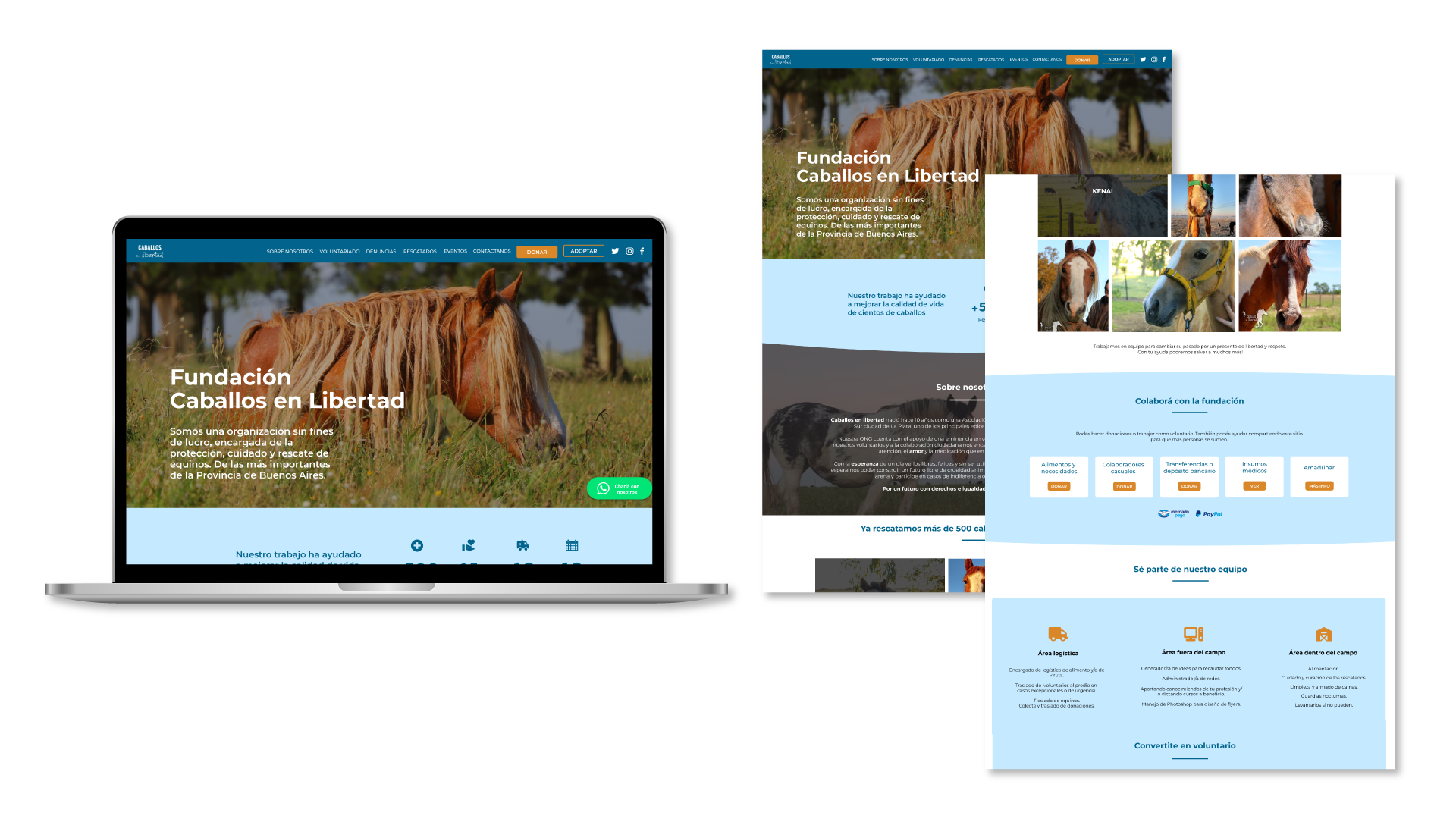In Argentina as well as in other countries, blood traction continues to be an activity despite the great amount of opposition, laws and sanctions, and the actions of non-profit organizations. Animals are injured, malnourished and forced to move without any kind of rest. This is a form of transport that harms the animal, as it is abused and neglected, and suffering invades the animal's body.
This problem exposes the precarious labor situation that so many Latin American countries are going through. On the other hand, there is a horse rental trade with the objective of using horses as things and being functional to the requirements of the person who is paying.
It is necessary the application of public policies to begin to reduce this activity that harms so much the life of equines, children and those people who do not have covered the means of subsistence and need to acquire them in some way, opting for this means of transport as a last option.
Fight against blood traction
In the year 2021, the civil association Caballos en Libertad was born, which is dedicated to helping those equines that are mistreated and abandoned. The tasks within the NGO are related to logistics, the field, the management of social networks and fundraising, among others.
The association has, on the one hand, a short-term goal: the search for a field with more space, in order to care for more horses. On the other hand, it has a long-term goal: to eliminate blood traction in the city of La Plata.
In this sense, the mission that gives direction to his path is clear: "To rescue and accompany during their recovery those horses that are morally and physically damaged, in order to give them the life and freedom they deserve".
With this objective in mind, and following the values that are at the heart of our organization, InkuA decided to launch an action plan to contribute our grain of sand to this fight against animal abuse. In addition, to help Caballos en Libertad to take advantage of its maximum potential to raise more funds and volunteers.
InkuA's contribution
In response to the cause, our Public Relations department proposed to cooperate from their field of knowledge to develop a proposal with the aim of promoting the visibility of this issue that is of great concern, and to increase donations and the participation of volunteers. In addition, they worked on the communication proposal to identify the target audience and be specific in terms of the messages they wanted to send in order to appeal to the user.
In this process of change, other departments joined in with the aim of improving the website and giving it a new visual identity.
For this purpose, it was taken into account that when communicating, the color palette used influences the perception that users have of a brand. For this reason, the Design department created a new version of the NGO's website, replacing red with navy blue, so that the page conveys the security and responsibility that the organization has in its daily work.
Regarding social networks, an exhaustive analysis of Instagram, Facebook and YouTube was carried out, in order to make decisions as to what to communicate based on the objectives and mission that the NGO has. In addition, the need for content planning was raised to boost online presence, as well as to carry out a measurement of metrics to review the communication objectives.

Why is collaboration important?
The issue of blood traction is a situation that concerns a large number of people and organizations. The participation of volunteers is important in order to give more and more visibility to this type of animal abuse.
The Internet and social networks offer us an optimal environment to reach both potential volunteers and new donations. The online presence is part of this new era and we must make the most of it to achieve our goals.
For InkuA it is an honor to be able to contribute from different departments to the development of social networks and communication strategies of other non-profit organizations in order to generate greater reach in their message.
Project members:
Design team: Cristian Hernández (manager), Camila Lange, Candela Sanó, Fernanda Suárez.
Traditional marketing team: Agustina Franconeri, Mariela Torres, Yanina Cerica, Matías Martín Linares.
IT:Manuel Florez, Nicolás Natale, Luciana Vanelli, Federico Peralta, Yuri Gómez, Diego N. Cabrera, Sergio Delgado, Romina Valdez, Vania Camones.
Manager:Stefania G. Cañete.
Author article: Daniela Parga